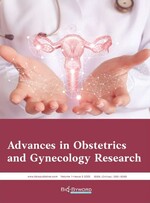Abstract
Objective: To explore the efficacy of combining low-dose esketamine with butorphanol in treating depression and pain following cesarean section. Methods: 100 cases of elective cesarean section were selected and randomly assigned into two groups in a 1:1 ratio. All parturients who fulfilled the inclusion criteria received spinal anesthesia, maintaining the anesthesia level at T6. In the esketamine group, the dosage regimen comprised esketamine 0.5 mg/kg and butorphanol 10 mg, diluted with 0.9% sodium chloride injection to 100 mL. The control group received butorphanol 10 mg, diluted similarly. Analgesia in both groups commenced after cutting the umbilical cord, with a loading volume of 2 mL, a background infusion dose set to 2 mL/h, and patient-controlled analgesia at 2 mL with an effective interval time of 30 minutes. The main indicators included the maternal burnout scale (MBS) and numerical rating scale (NRS) for pain to assess postpartum depression and pain after surgery. Results: No significant differences were observed in MBS scores between the two groups on postoperative days 1 to 9 (P > 0.05). Postpartum depression was not detected in either group. Pain NRS scores at 24 and 48 hours after surgery, including incision and uterine contraction pain, showed no significant differences between the two groups (P > 0.05). Tramadol rescue was not administered to any patients in either group. Additionally, no adverse reactions requiring drug intervention occurred in either group. Conclusion: This study concluded that the combination of low-dose esketamine with butorphanol did not further optimize the analgesic effect of butorphanol but significantly improved postpartum depression after cesarean section. Further research is needed to investigate the impact of the ketamine postoperative analgesia regimen on postpartum analgesia and depression.
References
Qiao J, Wang Y, Li X, et al., 2021, A Lancet Commission on 70 Years of Women’s Reproductive, Maternal, Newborn, Child, and Adolescent Health in China. Lancet, 397(10293): 2497–2536. https://doi.org/10.1016/S0140-6736(20)32708-2
Zanardo V, Volpe F, de Luca F, et al., 2020, Maternity Blues: A Risk Factor for Anhedonia, Anxiety, and DepressionComponents of Edinburgh Postnatal Depression Scale. J Matern Fetal Neonatal Med, 33(23): 3962–3968. https://doi.org/10.1080/14767058.2019.1593363
Gastaldon C, Solmi M, Correll CU, et al., 2022, Risk Factors of Postpartum Depression and Depressive Symptoms: Umbrella Review of Current Evidence from Systematic Reviews and Meta-Analyses of Observational Studies. Br J Psychiatry, 221(4): 591–602. https://doi.org/10.1192/bjp.2021.222
Zhao X-H, Zhang Z-H, 2020, Risk Factors for Postpartum Depression: An Evidence-Based Systematic Review of Systematic Reviews and Meta-Analyses. Asian J Psychiatr, 53: 102353. https://doi.org/10.1016/j.ajp.2020.102353
Dutsch-Wicherek MM, Lewandowska A, Zgliczynska M, et al., 2020, Psychiatric Disorders and Changes in Immune Response in Labor and Postpartum. Front Biosci (Landmark Ed), 25(8): 1433–1461. https://doi.org/10.2741/4863
Al-Harbi KS, 2012, Treatment-Resistant Depression: Therapeutic Trends, Challenges, and Future Directions. Patient Prefer Adherence, 6: 369–388. https://doi.org/10.2147/PPA.S29716
Ardalan M, Rafati AH, Nyengaard JR, et al., 2017, Rapid Antidepressant Effect of Ketamine Correlates with Astroglial Plasticity in the Hippocampus. Br J Pharmacol, 174(6): 483–492. https://doi.org/10.1111/bph.13714
Réus GZ, Abaleira HM, Titus SE, et al., 2016, Effects of Ketamine Administration on the Phosphorylation Levels of CREB and TrKB and on Oxidative Damage After Infusion of MEK Inhibitor. Pharmacol Rep, 68(1): 177–184. https://doi.org/10.1016/j.pharep.2015.08.010
Stewart DE, Vigod S, 2016, Postpartum Depression. N Engl J Med, 375(22): 2177–2186. https://doi.org/10.1056/NEJMcp1607649
Wang W, Xu H, Ling B, et al., 2022, Effects of Esketamine on Analgesia and Postpartum Depression After Cesarean Section: A Randomized, Double-Blinded Controlled Trial. Medicine (Baltimore), 101(47): e32010. https://doi.org/10.1097/MD.0000000000032010
Yang SQ, Zhou YY, Yang ST, et al., 2023, Effects of Different Doses of Esketamine Intervention on Postpartum Depressive Symptoms in Cesarean Section Women: A Randomized, Double-Blind, Controlled Clinical Study. J Affect Disord, 339: 333–341. https://doi.org10.1016/j.jad.2023.07.007
Lou F, Wang C, Dong X, et al., 2023, Analysis of the Analgesic Effect, Emotion, and Safety of Esketamine in Cesarean Section Analgesia for Puerperae. Altern Ther Health Med, 29(7): 424–428.
Liu Q-R, Zong Q-K, Ding L-L, et al., 2023, Effects of Perioperative Use of Esketamine on Postpartum Depression Risk in Patients Undergoing Cesarean Section: A Randomized Controlled Trial. J Affect Disord, 339: 815–822. https://doi.org/10.1016/j.jad.2023.07.103
Wang Y, Zhang Q, Dai X, et al., 2022, Effect of Low-Dose Esketamine on Pain Control and Postpartum Depression After Cesarean Section: A Retrospective Cohort Study. Ann Palliat Med, 11(1): 45–57. https://doi.org10.21037/apm-21-3343
Afonso J, Reis F, 2012, Dexmedetomidine: Current Role in Anesthesia and Intensive Care. Rev Bras Anestesiol, 62(1): 118–133. https://doi.org/10.1016/S0034-7094(12)70110-1
Liu H, Wang Y, Li F, et al., 2022, Analgesic and Sedative Effects of Different Doses of Dexmedetomidine Combined with Butorphanol in Continuous Analgesia after a Cesarean Section. Front Surg, 9: 896536. https://doi.org10.3389/fsurg.2022.896536
Liu S, Peng P, Hu Y, et al., 2021, The Effectiveness and Safety of Intravenous Dexmedetomidine of Different Concentrations Combined with Butorphanol for Post-Caesarean Section Analgesia: A Randomized Controlled Trial. Drug Des Devel Ther, 15: 689–698. https://doi.org/10.2147/DDDT.S287512
